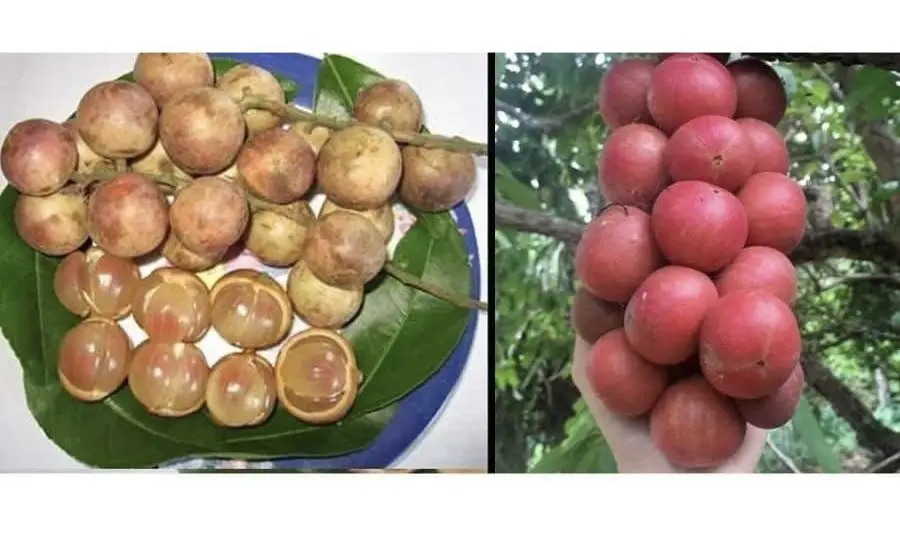Discover the Burmese Grape: A Tropical Treasure You Need to Know About
When you think of exotic fruits, your mind might wander to dragon fruit, mangosteen, or lychee. But there’s one tropical delight that’s lesser-known yet equally fascinating: the Burmese grape. Native to Southeast Asia, this unique fruit is a hidden gem waiting to be discovered. Let’s take a closer look at the Burmese grape, its health benefits, culinary uses, and why it deserves a place in your fruit basket.
What is a Burmese Grape?
The Burmese grape, scientifically known as Baccaurea ramiflora, is a tropical fruit native to Myanmar, Thailand, Laos, and other parts of Southeast Asia. It grows on an evergreen tree that can reach up to 25 meters in height. The fruit itself is round, about the size of a cherry tomato, and can vary in color from yellow to pink or purple when ripe. The outer skin is thin but tough, encasing a soft, translucent pulp with a sweet and tangy flavor.
Nutritional Profile of Burmese Grape
Burmese grapes are not only delicious but also packed with essential nutrients. Here’s a glimpse of their nutritional benefits:
- Rich in Vitamins: Especially vitamin C, which boosts the immune system and improves skin health.
- High in Antioxidants: Helps in fighting free radicals, reducing inflammation, and preventing chronic diseases.
- Source of Dietary Fiber: Promotes digestive health and helps maintain a healthy weight.
- Contains Essential Minerals: Such as calcium and iron, which are vital for bone health and blood production.
Health Benefits of Burmese Grape
1. Enhances Immune Function
The high vitamin C content in Burmese grapes strengthens the immune system, helping the body fight off infections and illnesses more effectively.
2. Supports Digestive Health
The dietary fiber found in Burmese grapes aids in digestion by promoting healthy bowel movements and preventing constipation. Regular consumption can contribute to a healthier gut.
3. Promotes Healthy Skin
Thanks to its rich antioxidant content, Burmese grape can help improve skin health by reducing oxidative stress, which leads to premature aging. The vitamin C also aids in collagen production, promoting firmer, more youthful skin.
4. Boosts Energy Levels
Burmese grapes provide a natural energy boost due to their carbohydrate content, making them a perfect snack for those needing a quick pick-me-up.
How to Enjoy Burmese Grapes
Burmese grapes can be enjoyed in various ways, making them a versatile addition to your diet:
- Fresh: Eat them as is by peeling off the outer skin to enjoy the juicy pulp inside.
- Juices and Smoothies: Blend the pulp into juices or smoothies for a refreshing tropical flavor.
- Jams and Preserves: Make homemade jam or jelly to spread on toast or use as a filling for desserts.
- Culinary Dishes: Use Burmese grapes in savory dishes, like salads or as a garnish for grilled meats, to add a burst of flavor.
Tips for Buying and Storing Burmese Grapes
- Buying: Look for fruits that are firm and have vibrant skin. Avoid any with bruises or signs of spoilage.
- Storing: Store Burmese grapes in the refrigerator to keep them fresh for up to a week. For longer storage, you can freeze the pulp in an airtight container.
Frequently Asked Questions (FAQ)
Q: Are Burmese grapes safe to eat raw?
A: Yes, Burmese grapes are safe and delicious when eaten raw. Just peel off the outer skin and enjoy the juicy pulp.
Q: Can I grow a Burmese grape tree at home?
A: Burmese grape trees thrive in tropical and subtropical climates. If you live in a suitable region, you can grow this tree in your garden. It requires well-drained soil and plenty of sunlight.
Q: What does the Burmese grape taste like?
A: The Burmese grape has a unique taste that is both sweet and tangy, often compared to a mix of lychee and grape.
Conclusion
The Burmese grape is a tropical treasure that offers a delightful combination of taste and health benefits. Whether you’re an adventurous eater looking to expand your fruit repertoire or someone seeking nutritious options, the Burmese grape is worth trying. So, next time you come across this exotic fruit, give it a try – your taste buds and body will thank you!

